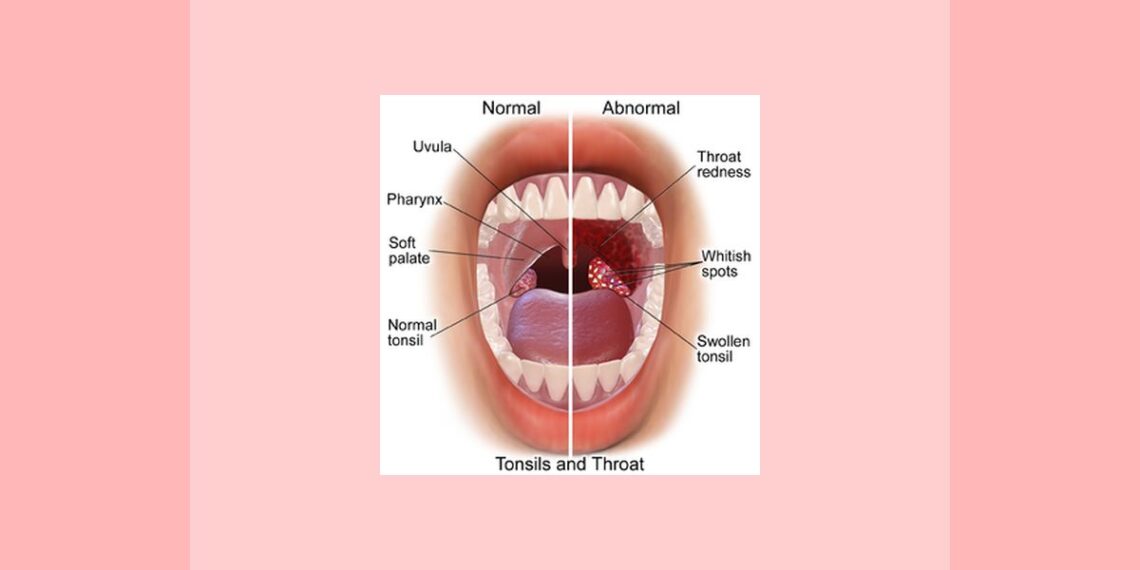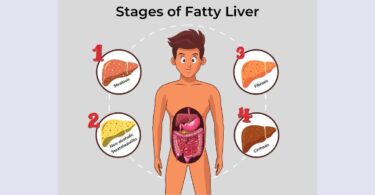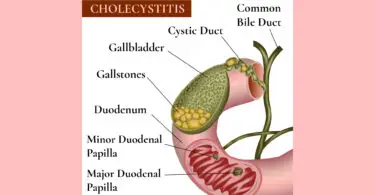Case 1:
Case description: A twelve year-old girl, whom I was treating for chronic complaints, got acute tonsillitis (Homeopathy Treatment for Tonsillitis) with the following symptoms:
The disease had been lasting since the previous day and the complaints developed gradually within several hours. She had a fever 38,2°C (101 °F). It has to be noted that she was one of the cases with lower physiological temperature – for all her life, she had had body temperature in between 35-36°C without having any thyroid related problems or other pathology which would explain this phenomenon. So we have to think as if the fever was 38,7°C. The fever was of typical remittent type.
- pains in throat (3) worse on the left side (3) (from the beginning significantly worse on the left side)
- swollen tonsils (left tonsil significantly more) (3) with yellowish-white coating (3)
- white coated tongue (2)
- burning in the throat (3) and a sensation of heat there (3)
- the pains were better by warm drinks (3) and worse from swallowing (3), more on empty swallowing (2)
- swelling of cervical glands (2)
- red cheeks (2)
- in general, she felt hot and wanted to be uncovered (3)
- headache in temples (2)
- vertigo when rising from bed suddenly (1)
That was all I managed to get. There were no other modalities concerning fever, generals, mental or emotional symptoms. (This is quite common because children usually find it difficult to give clear information.)
Note: the numbers behind the symptoms mean their intensity2
Selection of symptoms:
In this particular case, we have a difficulty finding rare and peculiar symptoms. I was able to find only two such symptoms: the left sided pain (we cannot explain why it is just the left side) and the amelioration of the pains from warm drinks (when there is an acute inflammation or abscess, the pains are usually worse from heat and better by cold). We might consider the burning character of pain peculiar as well because in tonsillitis, it is not so usual and not every patient with this diagnosis will have such type of pain. What I have usually seen in patients with tonsillitis, was sharp, cutting or stitching type of pain. Because some colleagues could oppose me in this subject, I will put this symptom among the intense ones for the sake of correctness, but since the patient reported it very clearly and intensely, we definitely have to use it.
Peculiar symptoms:
- left sided throat pain and inflammation of tonsils (3)
- throat pains better by warm drinks (3)
Intense symptoms:
- burning pains during tonsillitis (3)
- sensation of heat in the throat (3)
- throat pains worse from swallowing (3), esp. empty swallowing (2)
- yellowish-white coating on tonsils (3)
- general sensation of heat with a tendency to uncover (3)
I did not use symptoms like red cheeks, swelling of cervical glands or white coated tongue because they are pathognomonic symptoms and are not either peculiar (with regard to the pathology), or very intense. Vertigo when rising is quite common during high fever and in this case, it is not intense either.
Note: it is not always necessary to repertorize acute cases, but for the sake of completeness, I will state the relevant rubrics from the Synthesis repertory:[1]
| THROAT – PAIN – left |
| THROAT – PAIN – warm – drinks – amel. |
| THROAT – PAIN – burning |
| THROAT – HEAT |
| THROAT – PAIN – swallowing – agg. |
| THROAT – PAIN – swallowing – empty – agg. |
| THROAT – SUPPURATION – Tonsils |
| GENERALS – ABSCESSES – pus – yellow |
| GENERALS – HEAT – sensation of |
| GENERALS – UNCOVERING – desire for |
What I found very peculiar in this case was the fact that the patient felt warm in general, wanted to be uncovered and had the sensation of heat in the throat with burning pain and yet, the pain was better from warm drinks. So I was looking for a remedy which has left sided throat pains (or general left sidedness) better from warm drinks and is warm-blooded in general.
Differential diagnosis of the most relevant remedies:
Sulphur has left-sidedness, burning pains, sensation of heat in affected parts and a general sensation of heat (esp. in bed) as keynotes. Redness of face is quite normal in fevers but it is also in favor of Sulphur as plethora is a keynote of this remedy. We can find it in the second degree in the rubric THROAT – PAIN – warm – drinks – amel. in the Synthesis repertory and in the original Kent’s repertory.
Chamomilla is a warm blooded remedy which has amelioration of most local complaints (except toothache) from warm applications. It has throat pain better by warm drinks. There are no other confirmations and none of the mentioned symptoms are keynotes of this remedy.
Lycopodium is an important remedy for tonsillitis with pains better from warm drinks and it can be worse from heat in general, although it is not a keynote. However, right-sidedness is a big keynote of this remedy and it is therefore a contraindication. We could have thought about this remedy if the inflammation had originally started (or had been worse) on the right side and then moved to the left side, but it was not so in this case.
Arsenicum album has local and general amelioration from heat (except for headaches) as a keynote and it is valid for throat pains as well. Burning character pains is another strong keynote of this remedy, but it has two contraindications in this case, mainly its general aggravation from cold, which is a keynote, and also right-sidedness.
Hepar Sulphur also belongs to main remedies for complaints ameliorated by heat – it is its general and local characteristics and it is often indicated especially in suppurative forms of tonsillitis. As was the case with Arsenicum, Hepar Sulphur is also generally worse from cold. It is one of the chilliest remedies in the materia medica.
Sabadilla has left sided throat pains which are better from warm drinks, but this remedy has general chilliness as a keynote.
Alloxanum is a small remedy which has left sided burning pains in throat better from warm drinks, but this remedy is generally chilly.
Rhus toxicodendron covers throat pains better from warm drinks and is a left sided remedy. It is contraindicated by general chilliness.
Lachesis is one of the main remedies to think of in left sided tonsillitis. It covers the aggravation from empty swallowing (together with Kali Carbonicum, Mercurius, Lac Caninum and other remedies) and it is generally worse from warmth. The problem is that throat pains of Lachesis are worse from warm drinks.
Choice of the remedy:
The remedy which has the most keynotes (namely five) in the case is Sulphur. There is no contraindication for it and we can find a lot of confirmation for suppurative tonsillitis with swollen cervical glands in materia medica from J.T.Kent[2], J.H. Clarke[3], C. Hering[4] or S. Hahnemann[5]. The amelioration of the throat pains from local heat can be found in Hering’s Guiding Symptoms of Our Materia Medica.6
Prescription: Sulphur 30C every 2 hours
Outcome of the treatment:
After 3 doses of Sulphur 30C the patient felt significantly better, so the dosing was stopped. She did not report any initial aggravation but this is not an uncommon thing in intense acute cases where the symptoms are at their peak. The remedy was correct because in a few hours, the fever went down, the pains diminished considerably, she felt much better in general and the swelling of tonsils gradually subsided during the next 24 hours. From my experience, in tonsillitis, swelling usually goes away more slowly than pains or fever. I advised her to be careful and rest for a few more days in order to avoid a relapse which can occur when a patient starts feeling much better quickly after a homeopathic remedy and starts exerting herself. She has had no other episode of tonsillitis for 18 months now, but during the course of her chronic treatment, she has had some episodes of colds.
Discussion:
This case was interesting from several points of view. First of all, it reminds us that homeopathy is not a mechanical thing and it is not possible to make routine prescriptions (apart from a few exceptions). Sulphur is not a remedy that most of us primarily think of in cases of tonsillitis. But what the law of similars tells us to do is to simply find a remedy that covers the most characteristic symptoms of the case and if possible, such symptoms should be keynotes of the selected remedy (characteristic symptoms of the remedy). In homeopathy, a diagnosis usually plays a very small role in the choice of the remedy. It is important as far as the prognosis and case management are concerned and in some cases, it is helpful to know what is behind the symptoms, what is the origin of the pathology. For example, we know that Sulphur also belongs to important remedies for abscesses in general. But what is the most important is to match the most characteristic (unique and individual) symptomatology of the patient with a remedy, for which this set of symptoms is also unique and characteristic, regardless of the diagnosis. Somebody might oppose that Sulphur does not have the most peculiar symptom of the case – the amelioration of the throat pains – as a keynote, but it is a local symptom, whereas the other keynotes (the general aggravation from heat, sensation of heat, burning pains and left sidedness) are generals which are always more important than local symptoms.
The problem with this case was that none of the other remedies could be confirmed better, because the symptom picture was not absolutely clear. There was no other remedy which would cover more keynotes or an essence and most of the other remedies were contraindicated. Five keynotes of a remedy in the case and no contraindication means a very good confirmation of the remedy. Having said this, Sulphur was the similimum in this case and the reaction confirmed that.
The other important lesson from this case is that our knowledge of the remedies should be as detailed as possible (which is, of course, a huge life-long task). Every detail can help us to become better homeopaths. In some cases, it is not enough to know that Sulphur is simply worse from heat. Some particular symptoms of the remedy may have the opposite modality. For example, Lachesis has most complaints worse on the left side but sciatica is usually right-sided. Crot. horridus, on the contrary, is generally right-sided, but its throat pains are worse on the left side and it also has aggravation of chest symptoms aggravated by lying on the left side. Lycopodium is one the most well known right-sided remedies but can treat complaints of the left kidney, etc.
Case 2:
Case description: A two year-old girl developed acute tonsillitis. The previous day, she developed white spots on both tonsils (3) without any pain or other physical symptoms. However, she was very weepy and wanted to be carried all the time.(3) The next day she developed a temperature 37,5°C, pains and cough.
The symptoms were the following:
- red tonsils (3) with white spots (3) and slight swelling (1)
- dry cough (2), weeping after every coughing (3), complains about pain in throat from coughing (3)
- moaning (3), dissatisfaction (3) and capriciousness (3), wants company (2)
- there was nothing that would calm her down except taking her on arms and carrying her (3)
- if they do not take her on hands immediately when she wants it, she gets angry (3)
- strong salivation (3)
- snoring (3) which she normally does not have in her chronic state
- lack of appetite (3)
That was the basic information from which the most probable remedy was already quite apparent but as I wanted to be sure and exclude other possible remedies, I started asking (again, I only state those questions and answers which revealed some pathology, not healthy characteristics):
How is her thirst? She is more thirsty than usual (2) but especially at night (3)
Does she feel chilly or warm? Does she uncover? She feels rather chilly (1) and stays covered (2)
Is she perspiring? Yes, on her feet and back.(2)
Does the sweat have any specific odor? Maybe sour (1)
When is the time when she is generally the worst (the fever, the emotional symptoms, the cough, energy, etc…)? At about 8 p.m. (3)
Is there any offensive odor from her mouth? Yes, like rotten eggs (3)
As the last piece of information was given very spontaneously and with high accuracy, the remedy was beautifully confirmed at this point and there was no need to ask further.
Selection of symptoms:
In this case, almost all mentioned symptoms are either intense, or peculiar. Only the swelling of tonsils in the first degree is not intense enough and it is not peculiar at all and the dry cough is too general and a lot of remedies cover it. Lack of appetite in fever is also normal. In nature, we can see that most animals stop eating when they get sick as it is a natural mechanism of the body to save energy for the fight with the disease.
Peculiar symptoms:
- odor from mouth like rotten eggs (3)
- capricious, moaning, dissatisfied, angry when she does not get what she wants (3)
- wants to be carried (3)
- weeping from pain during coughing (3)
- sour odor of perspiration (1)
- general aggravation around 8 p.m. (3)
Intense symptoms:
- salivation (3)
- snoring (3)
- thirsty (2), esp. at night (3)
- red tonsils (3) with white spots (3)
- perspiration on feet and back (2)
As this it was not necessary to repertorize this case, I will go straight to the differential diagnosis.
Differential diagnosis of the most relevant remedies:
The most peculiar symptom of the case – the odor from mouth like rotten eggs – is typical of Arnica, Sulphuric acid and Chamomilla. These three remedies are the most characteristic for odor of discharges or mouth odor and eructations like spoiled eggs. Other remedies to be also considered are Sulphur, Magnesia muriatica and Psorinum.
From the mentioned remedies, capriciousness and dissatisfaction is typical mainly for Chamomilla, but Arnica and Magnesia muriatica, Sulphuric acid can also be considered. Other remedies known for strong dissatisfaction are Cina, Calcarea phosphorica, Antimonium crudum or Tuberculinum. Magnesia-carbonica, Rheum and Sulphuric acid are three remedies which can be strongly dissatisfied, capricious and angry and have sour odor of perspiration as a keynote. Antimonium tartaricum can also be very capricious and peevish, clings to the mother and has respiratory complaints.
Weeping from cough in children is typical for Belladonna, Hepar Sulphur, Phosphorus and Bryonia, but especially when they cry before each cough out of the fear from pain that is about to come. Together with thirst and desire for company and to be carried, Phosphorus can be an option but our remedy has to be strongly dissatisfied, capricious, angry, which is not typical for Phosphorus.
Bryonia is thirsty and has general aggravation around 9 p.m. (or a.m.) which can be in a way considered as similar to our case where we have the aggravation around 8 p.m. because each organism can have some individual deviation according to geographical differences, lifestyle habits, etc. So if the remedy can be strongly confirmed by other symptoms, we can consider it as another good confirmation even if it is around 8 p.m. and not exactly 9 p.m. However, we should never base our prescription on this type of symptom when it is not accurate. However, Bryonia has aversion to company as a keynote, which is a contraindication.
Another remedy, typical for general aggravation around 9 p.m. or a.m. is Chamomilla, for which it is a keynote and also Sanicula that has obstinacy and irritability as keynotes and it also has strong perspiration of feet.
From all the aforementioned remedies, Chamomilla covers the case the best. It is one of the main remedies for discharges, eructations and mouth smelling like rotten eggs and it has capriciousness, irritability, dissatisfaction, moaning and anger as keynotes. The anger when the child does not get what she wants is very typical for this remedy, as well as the desire to and amelioration from being carried. Weeping from cough also corresponds with Chamomilla because it is one of the remedies that are the most sensitive to pain in the whole materia medica. Arnica is also very sensitive to pain and covers painful coughing, but it cannot be confirmed further. Arnica, similarly to Bryonia also avoids contact. It is one the most important keynotes of Arnica.
But let us go back to Chamomilla. It also covers the increased thirst. The general aggravation around 8 p.m. is also a very good confirmation as I have already explained. Chamomilla also covers snoring and increased salivation very well.[6] Perspiration and discharges of Chamomilla can smell sour6,[7], although it is not keynote. As perspiration during fever is quite normal, it is not needed for the remedy to cover sweat on back or feet in order to prescribe it, but still, Chamomilla is in the relevant rubric for perspiration of feet. Chilliness of the patient can be a seeming contraindication but first of all, it is not so intense and during fever, the child can have a phase of chilliness which is not peculiar. Desire to be covered can simply be a custom which the child adopted because most parents tend to cover children during acute diseases with fever.
As we can see, Chamomilla is the most similar remedy to the case as it covers the most peculiar symptoms of the case and most of them are keynotes of this remedy. Irritability and anger is the essence of this remedy. An essence[8] is always of a very high value if it is present in the case. The remedy can be prescribed on the basis of totality, keynotes and essence.
Prescription: Chamomilla 30C every 2 hours
Outcome of the treatment:
Shortly after the first dose of Chamomilla 30C, the child got hungry and wanted to eat something. This is always a very good sign in children with fever. Then she felt tired and fell asleep which we can consider to be initial aggravation after the remedy. She still snored during sleep. When she woke up after a few hours, she was much less capricious and dissatisfied. Several hours later, an evening came and she went to sleep again. She stopped snoring and the next morning, the cough was gone. The fever also subsided during that night and did not return. The tonsils became less red and there were fewer white spots. But she developed diarrhea. This is also a very good sign (provided that there is general amelioration and it is not an acute diarrhea case) because any discharge after the remedy means that the organism is detoxicating and cleansing itself. It might also have been a proving of Chamomilla but if such a thing happens (again together with a general amelioration) it is a very good confirmation that the remedy was correct.8 Her mood went into normal and the only remaining symptom was the diarrhea which went away in the next few days. The follow up of this case is two years. Three months after the tonsillitis, she developed an acute cough and later on, some other acute colds. The child was also successfully treated for chronic eczema.
[1] SCHROYENS, F. The Essential Synthesis 9.2E. London: Homeopathic Book Publishers, 2007. ISBN: 978-0-9557151-0-5
[2] KENT, J.T. Lectures on homoeopathic materia medica. New Delhi: B. Jain Publishers, 2011. ISBN 978-81-319-0259-2
[3] CLARKE. J.H. A Dictionary of Practical Materia Medica, Vol. III. New Delhi: B. Jain Publishers, 2012. ISBN 978-81-319-0261-5
[4] HERING, C. Guiding Symptoms of Our Materia Medica. Sulphur [online]. https://homeopathybooks.in/guiding-symptoms-of-our-materia-medica/sulphur-5/
[5] HAHNEMANN, S. The Chronic Diseases, their Peculiar Nature and their Homoeopathic Cure, Second Part: Antipsoric medicines. Sulphur [online]. http://homeoint.org/books/hahchrdi/sulph.htm
[6] VITHOULKAS, G. Materia medica Viva. Volume 8. Atlonissos, Greece: International Academy of Classical Homeopathy, Center of Homeopathic Medicine, S.A., 2009. ISBN: 960-86163-5-2
[7] TYLER, M.L. Homeopathic Drug Pictures. Chamomilla [online]. https://homeopathybooks.in/homeopathic-drug-pictures-by-m-l-tyler/chamomilla-20/
[8] VITHOULKAS, G. The Science of Homeopathy. Athens, Greece: International Academy of Classical Homeopathy, Center of Homeopathic Medicine, S.A., 2009. ISBN: 978-960-87429-3-2







very informative
thank you for sharing
Top notch case analysis. It doesn’t get any better. Every student should read these.